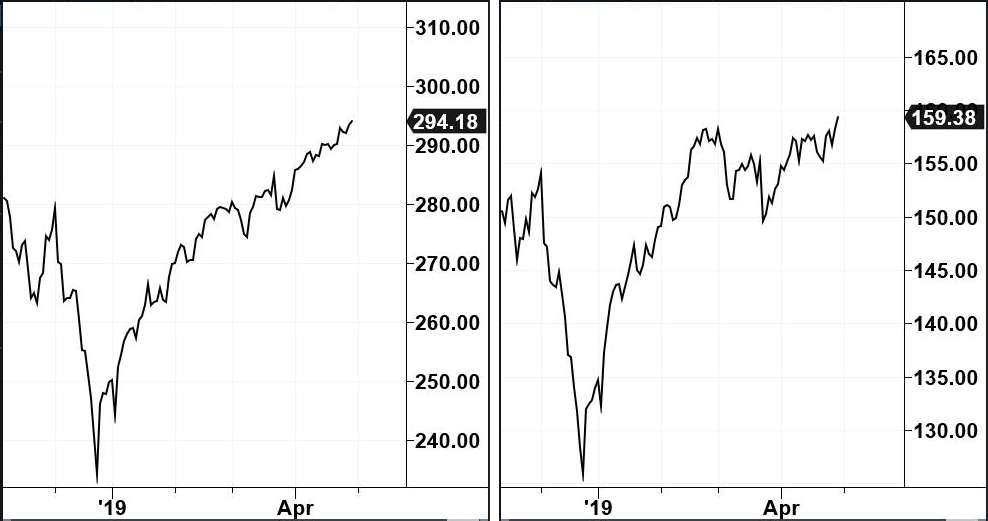Here I am again, in a surf shop 35 minutes from where I live, to replace another pair of sunglasses I lost.
The shop isn’t small, but it’s packed with enough gear to transform any kook into a glorified surf local.
At checkout, I notice all the novelties and souvenirs positioned to attract any last-minute impulse purchase you may want to make.
Dainty, beaded, hemp-like bracelets hang from a display. Loads of them — they attract my attention.
They probably don’t cost more than $0.20 to make, but the store sells them for $6.99 each.
I know my daughters would love them, but I decide the material return isn’t worth the price tag…
Consumers spend money if they feel good about the value something will bring in the future, whether five seconds from now … or five years from now.
The psychology of consumer “feel-goodness” influences the stock market, too.
Large-cap stocks tend to be stable investments even when investors feel reluctant to risk money in the stock market.
Small-cap stocks reflect investors’ willingness to risk their money.
When investors worry about the future, they shy away from smaller, riskier companies.
But as investors become confident, they can make a lot of money in small caps.
And there’s a simple way for you to capitalize on that.
Step Right Up: Pick the Winning Chart
I’m about to show you two charts, side by side, to explain why the stock market is going to go up even more this year.
Each chart represents the price of a U.S.-listed exchange-traded fund (ETF). One of them will give you more bang for your buck in the months ahead.
So, when you look at these charts, ask yourself which ETF you’d rather buy today…
Ready?
Go…

Each ETF represents a large collection of U.S. stocks.
The chart on the left is the SPDR S&P 500 ETF (NYSE: SPY). It tracks an index of 500 large-cap stocks.
The chart on the right is the iShares MSCI Russell 2000 ETF (NYSE: IWM). It tracks an index of 2,000 small-cap stocks.
You might look at the S&P 500 and think, “I don’t want to buy now — stocks are too expensive!”
I don’t blame you.
Stocks have gone up more than 25% since Christmas. So, there may be a better entry point in the coming weeks for nimble traders.
But don’t let that distract you.
The psychological backdrop for stocks is bullish. And now is not the time to be cashing out all your chips.
Both of these ETFs will probably go higher this year. But IWM will outperform SPY. The bull-market feel-goodness will make investors hungry for small caps again.
The Biggest Surge in Consumer Feel-Goodness in the Last 10 Years
Last year’s market sell-off brought out the bears.
Many considered the 20% drop as a bear market.
But, to me, it never felt like THE bear market that everyone feared. And that’s because there was no blow-off, bull-market top before it.
Now, we could be witnessing the beginnings of the blow-off.
We may be entering a phase when investors throw caution to the wind because they feel good about the future.
A blow-off phase will fuel investors’ appetite for small caps.
And the latest U.S. economic data suggests that’s where things are heading.
Personal Consumption Expenditures grew by 0.9% in March.
That’s the biggest month-over-month growth since 2009, the beginning of the bull market.
In other words: Consumers felt good enough to spend more money than usual.
This is a huge change! In previous months, consumers withdrew spending and investors worried about the economy.
And it influenced investors’ appetite for stocks during that time.
Despite the stock market’s year-to-date gains, investors became unsure about small caps at the end of February.
The Russell 2000 ETF is unchanged from two months ago. Whereas the S&P 500 ETF rose 4.72% in that time.
The S&P 500 is at a record high.
But the Russell 2000 is still 8% below the record high it set last year.
Fresh feel-goodness could change that.
When investors get excited about consumer optimism and economic growth potential, they will pour money into small-cap stocks and ETFs like the iShares MSCI Russell 2000 ETF (NYSE: IWM).
By my analysis, IWM is set to jump as much as 20% in the months ahead.
Get ready! You can make a lot of money if you position ahead of impulsive investors.
Good investing,

John Ross,
Senior Analyst, Banyan Hill Publishing









